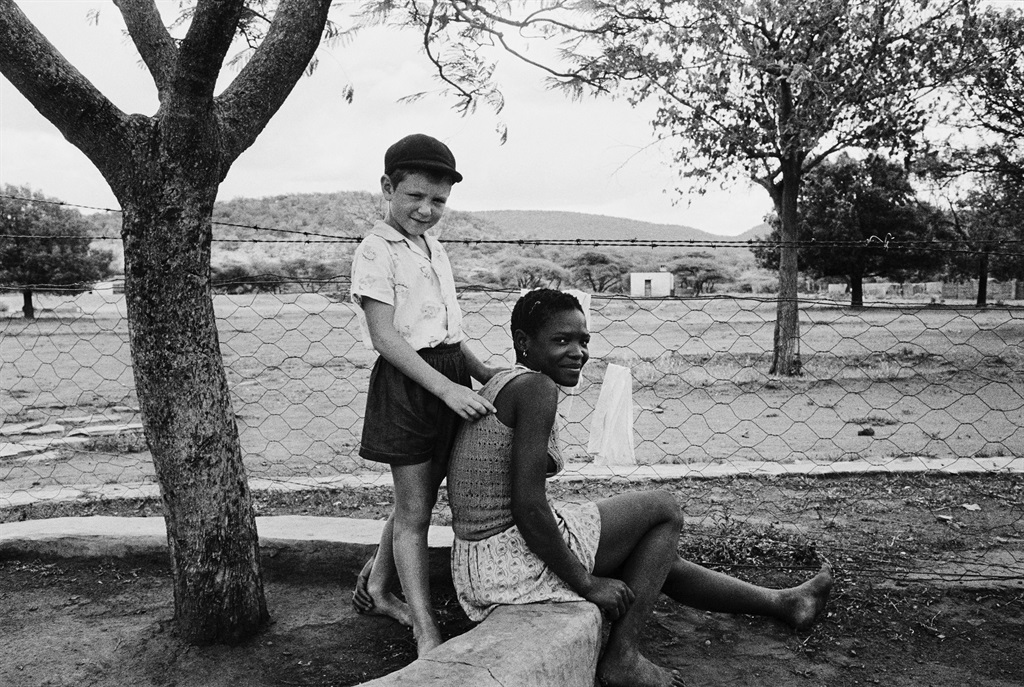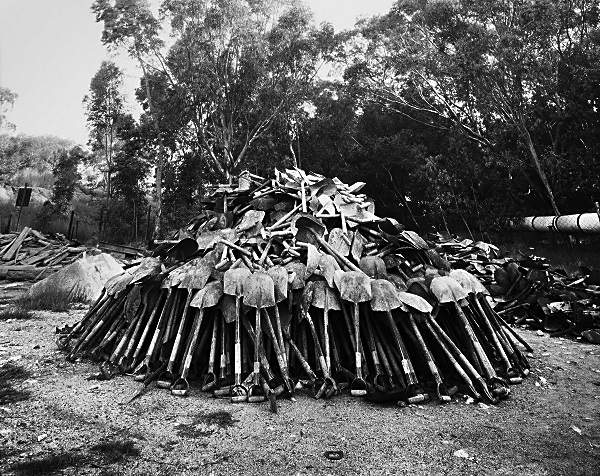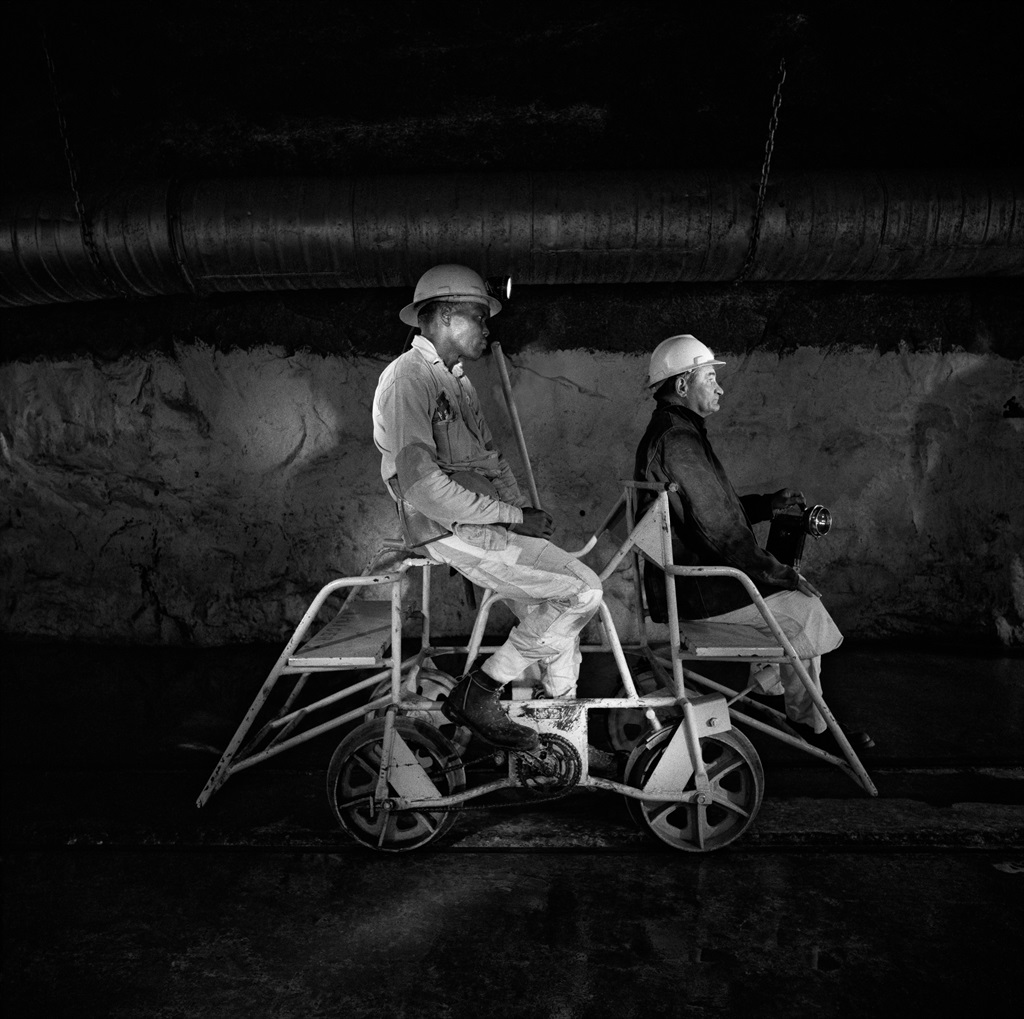
A farmer’s son with his nursemaid, Heimweeberg, Nietverdiend, Western Transvaal, 1964 David Goldblatt was known for climbing into his car and travelling the country to capture what lay beneath the laws introduced by apartheid. His images raise questions rather than give answers. In a time of separate development, why is the ‘kleinbaas’ so attached to his ‘nursemaid’? Were black lives only dignified in the service of whites? Who raises the child raising the child? How will their destinies play out in a brutally unequal society? Picture: David Goldblatt
How does one read the powerful yet apparently mundane images that define the epic output of David Goldblatt?
Simple, whether it be an image of the inaccessible and untended monument of the Cradock Four or of the terrible beauty of the hopeful new sculptures on the campus of the race-torn Free State University, Goldblatt sought to capture the ethos of the time he lived in.
"I had a deep sense of wanting to penetrate to the core of things, to somehow grasp the fundamental of Afrikaner nationalism, its underlying spirit," once said Goldblatt.
The grand old man of South African photography – part social ducumenter, part artist, seldom photojournalist – also explained that his choice to not use colour in his personal work was motivated by the need to "express anger, fear and disgust which was better communicated by the black and white medium".
Pictures editor Leon Sadiki chooses the shots and arts editor Charl Blignaut captions them.

saturday morning at the hypermarket: semifinal of the miss lovely legs competition, 1980 This is a Goldblatt classic. An innocent-seeming photograph in a supermarket reveals a dramatic and sickening complexity. Beauty in apartheid South Africa was a white affair that played out its supremacy in the form of display and access. Yet you can’t shy away from the awkward objectification of the women on stage – and even less so the black gaze of the audience, relegated to cheering on whiteness and aspiring to its standards

a farmer’s son with his nursemaid, heimweeberg, nietverdiend, western transvaal, 1964 David Goldblatt was known for climbing into his car and travelling the country to capture what lay beneath the laws introduced by apartheid. His images raise questions rather than give answers. In a time of separate development, why is the ‘kleinbaas’ so attached to his ‘nursemaid’? Were black lives only dignified in the service of whites? Who raises the child raising the child? How will their destinies play out in a brutally unequal society?PHOTOs: david goldblatt

central salvage yard, randfontein estates, randfontein, 1966 One of Goldblatt’s great contributions to our photography was his ability to speak of the human condition without showing any people. But we can feel the callouses on the hands of the mine workers who built the economy of the country on these ‘lashing’ shovels retrieved from underground. Wrote Goldblatt: ‘Every grain of sand in the yellow dumps that made the Witwatersrand landscape and every grain of gold that made its wealth came from a rock off a black man’s shovel underground’

team leader and mine captain on a pedal car, rustenburg platinum mine, rustenburg, 1971 The power play between black and white is a subtext through all of Goldblatt’s crucial apartheid-era photographs. There is no drama and no fireworks, just an iconic depiction of white supremacy and black labour. Goldblatt’s first book was on life on the mines and would remain so relevant that it was republished towards the end of his life

the dethroning of cecil john rhodes, university of cape town, april 9 2015 In his early years, Goldblatt documented the country’s monuments that depicted the pomp and brutalism of the colonial masters. Towards the end of his career, he would return to the subject, documenting often derelict and fenced-off post-liberation public artworks. There are seldom people in the pictures, but this is an exception, a key moment of the #FeesMustFall protests frozen for posterity as the statue of the arch coloniser is removed. While supporting the students, Goldblatt objected to the university covering up artworks that may offend the students and would withdraw his collection from the university’s Libraries Special Collections and move it to Yale University in the US. He would also refuse the state honour of the Order of Ikhamanga in protest against the secrecy bill that would infringe on media freedom

anna boois, kamiesberge near garies, namaqualand, northern cape, 2003 Life here is as bountiful as it is sparse. A goat farmer poses with her barren vegetable garden and her lavish birthday cake to paint a picture of celebration against the odds. It was only in 1994 with the advent of democracy that Goldblatt stopped working exclusively in the black and white of apartheid and ventured into muted use of colour for the new era

yaksha modi in her father’s shop, 17th street, fietas, johannesburg, 1976 Goldblatt never considered himself a portraitist, just a photographer, but his portraits speak of a past and a future with quiet power. Yaksha Modi looks pensive even surrounded by bounty. The original caption explains that the family shop would be destroyed under the Group Areas Act. What remains is a photo as memorial. Goldblatt himself was born into a shopkeeping family

going home, marabastad-waterval route, 1984 A worker sleeps on the bus home. According to the original caption, ‘the cycle will start again tomorrow at between 2am and 3am’. Goldblatt challenged white South Africans with images many didn’t dare deal with and questions many didn’t want to answer. Who built – and continues to build – South Africa, and at what cost cheap labour and migrant life? What is the man dreaming? By leaving his black-and-white images to develop for longer than prescribed, Goldblatt achieved pitchblack to contrast the light in his photos, bleeding tragedy into form
We live in a world where facts and fiction get blurred
Who we choose to trust can have a profound impact on our lives. Join thousands of devoted South Africans who look to News24 to bring them news they can trust every day. As we celebrate 25 years, become a News24 subscriber as we strive to keep you informed, inspired and empowered.





 Publications
Publications
 Partners
Partners















